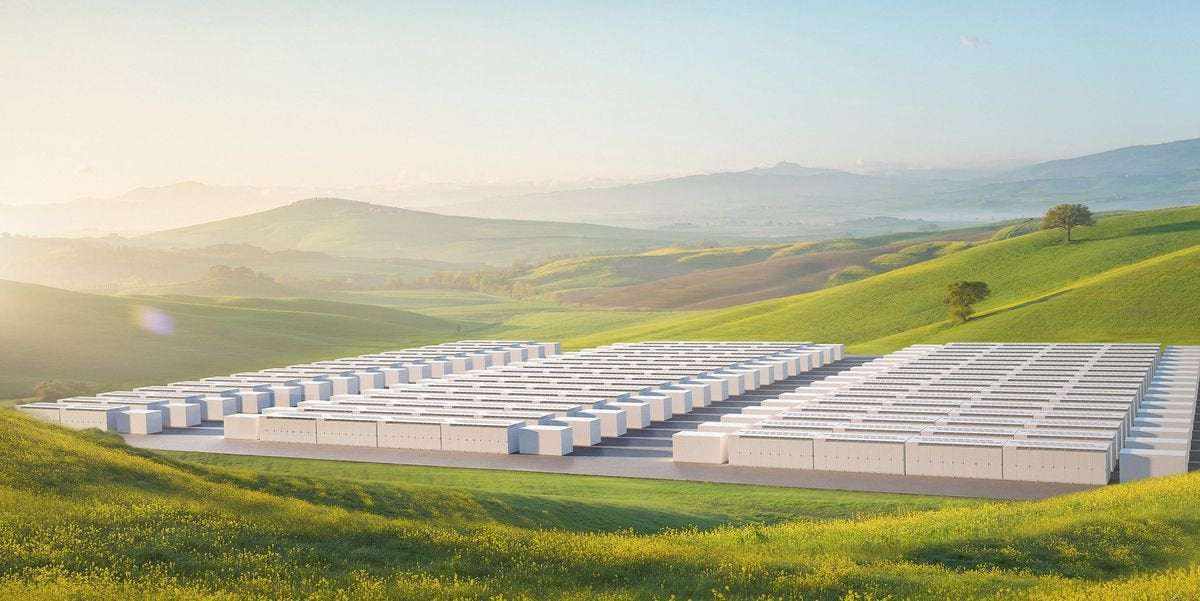The battery backup Elon Musk built to win a bet has saved South Australia tens of millions of dollars.
The record-setting "battery" is made of Tesla PowerPacks and helps stabilize the local grid.
Rural South Australia experiences bad blackouts each summer.
More than two years after winning an electricity bet, Elon Musk’s resulting Australian solar and wind farm is an almost total success . The facility powers rural South Australia, whose population density falls between Wyoming and Alaska, the two least dense U.S. states.
In 2016, South Australia experienced a near total blackout after “an apocalyptic storm— involving 80,000 lightning strikes and at least two tornadoes,” Vox explains . In the aftermath, a Conservative politician blamed the push for renewable energy for the extent of the blackouts.
For those even passingly familiar with Musk and Tesla’s online presence, the rest won’t be surprising. The head of batteries at Tesla said he was sure the company could do better, an Australian billionaire asked if he was serious, and Musk jumped in to promise his team was.
Tesla will get the system installed and working 100 days from contract signature or it is free. That serious enough for you? — Elon Musk (@elonmusk) March 10, 2017
The rest is history. Musk reached his goal 40 days early, and the Australian billionaire funded the project as promised. We can argue about whether or not private citizens should have to rely on a billionaire angel investor to get a steady supply of power or make the shift to renewable energy, but in this case, the bet benefited a shortchanged rural population beginning almost immediately.
What’s the secret? Well, there truly isn’t one. The Neoen-owned Hornsdale Power Reserve is literally a facility full of Tesla PowerPacks that receives and stores energy from nearby wind and solar farms. By storing power up to its capacity of 100 MW, this “battery” can absorb brief blips in the grid surrounding it, reducing outages for residents and easing the burden on businesses or facilities that lose money, product, and more during those outages. It could also reduce the amount of fossil fuel burned to power backup generators.
The dedicated battery farm can power 30,000 homes for up to an hour, which relieves the burden on the grid during hot summer days when failure is most likely. “Hornsdale and other grid-scale batteries offer a way to tackle the variability of wind and solar power, and South Australia is seen as a global testbed in the transition away from fossil fuels, with the state getting more than half its power from renewable sources last year,” Bloomberg reports .
Just 1.7 million people live in South Australia, which is a nice size to consider a test market for technology like this. Rural grids tend to be left behind, because the ratio of required hardware and infrastructure is still so high per consumer—much more-so than in a big city, where the same short length of wiring could power thousands of homes. And building a facility that acts as a battery can help smooth out the natural ebbs and flows that come both from renewable energy technology and from the spread out, failure-prone nature of more rural grid sections.

Funktapus on March 11st, 2020 at 17:01 UTC »
I was a little confused at first, because they referenced 30,000 homes and $76 M in savings. That would be over $2,500 per home, which is ridiculous.
In reality, this serves a much larger grid (the 30,000 figure was just illustrative for the reserve's capacity). This same grid lost power for 850,000 customers in 2016. If you divide $76 M in savings across them, its only $89 per customer.
Overall, it seems like this was a fantastic investment. I hope Tesla or others find more grids that could use this kind of intervention to make renewable energy more stable and attractive.
youplayiwin on March 11st, 2020 at 16:27 UTC »
Need to get me some AA seeds. Hopefully I can harvest before my remote dies.
vacuous_comment on March 11st, 2020 at 16:11 UTC »
Errrrr, I have to say that the capacity of a battery is not measured in the units of power. It would be in the units of energy which would be joules or maybe watt-hours or some such.